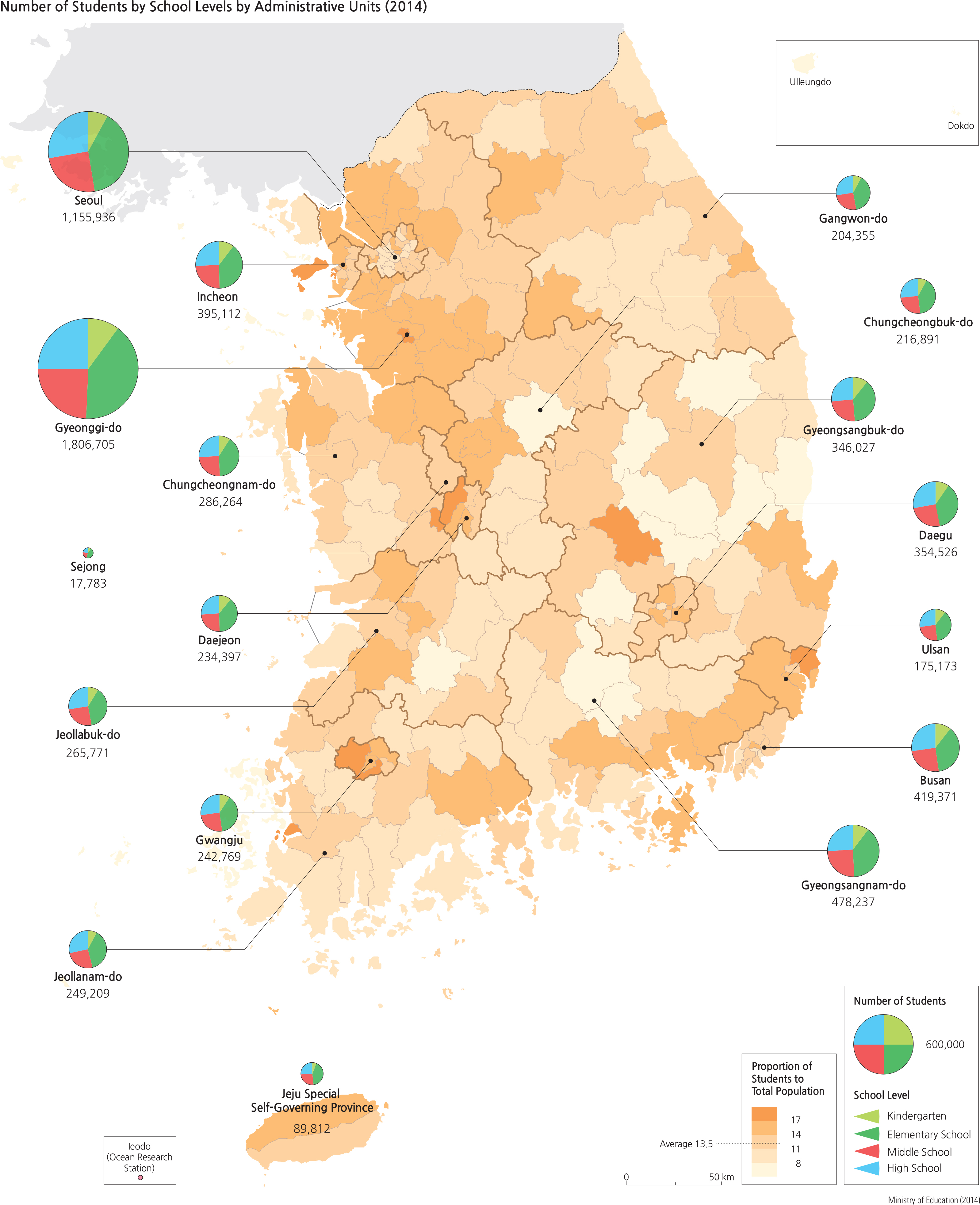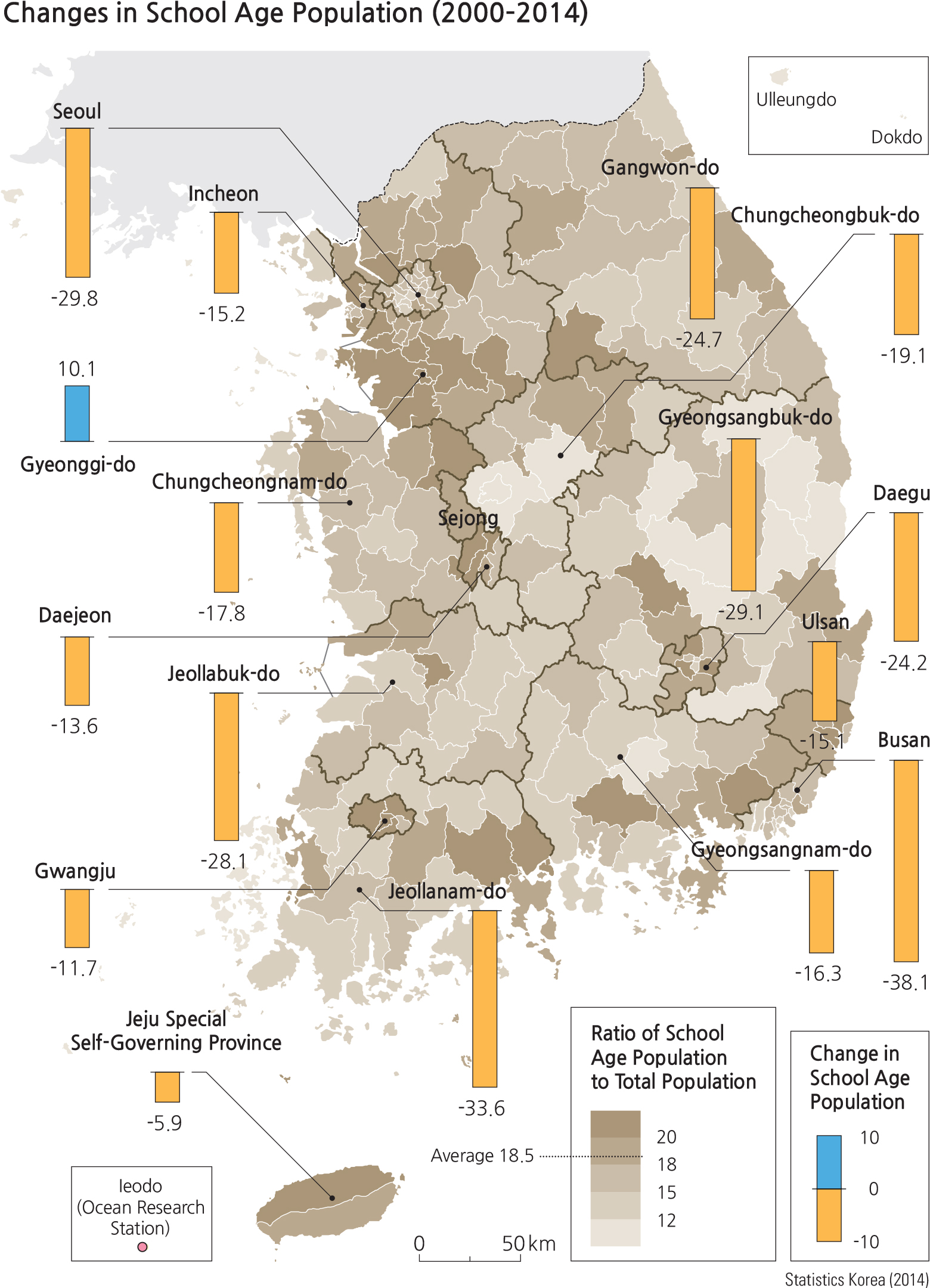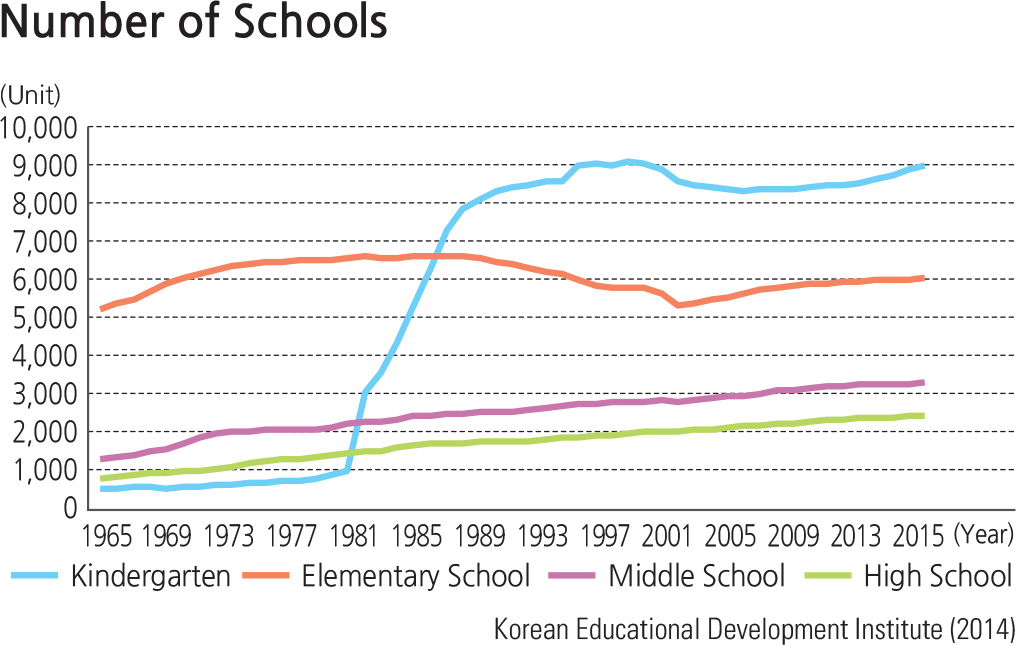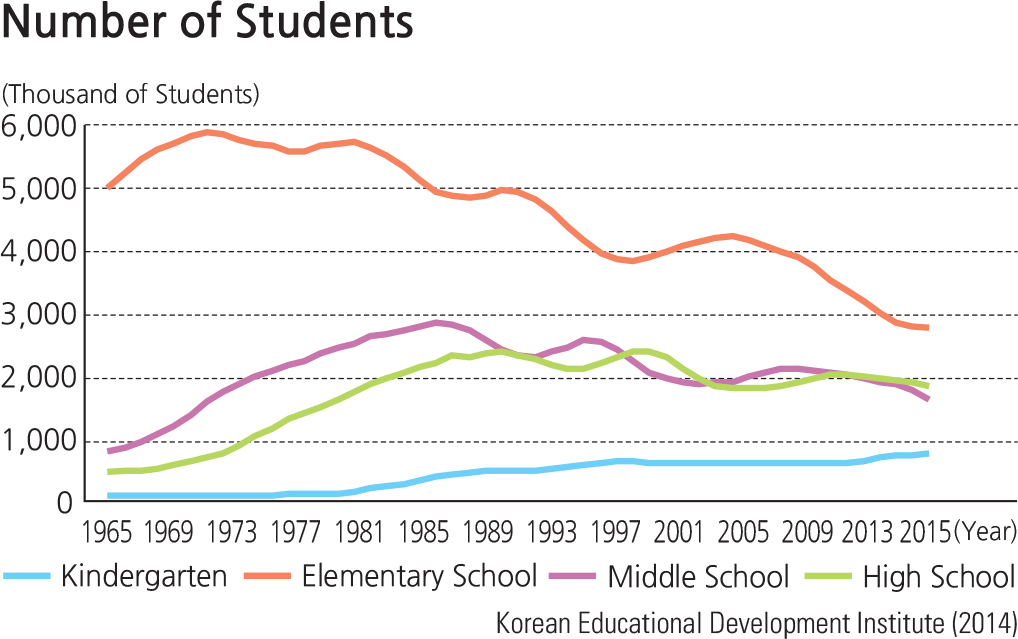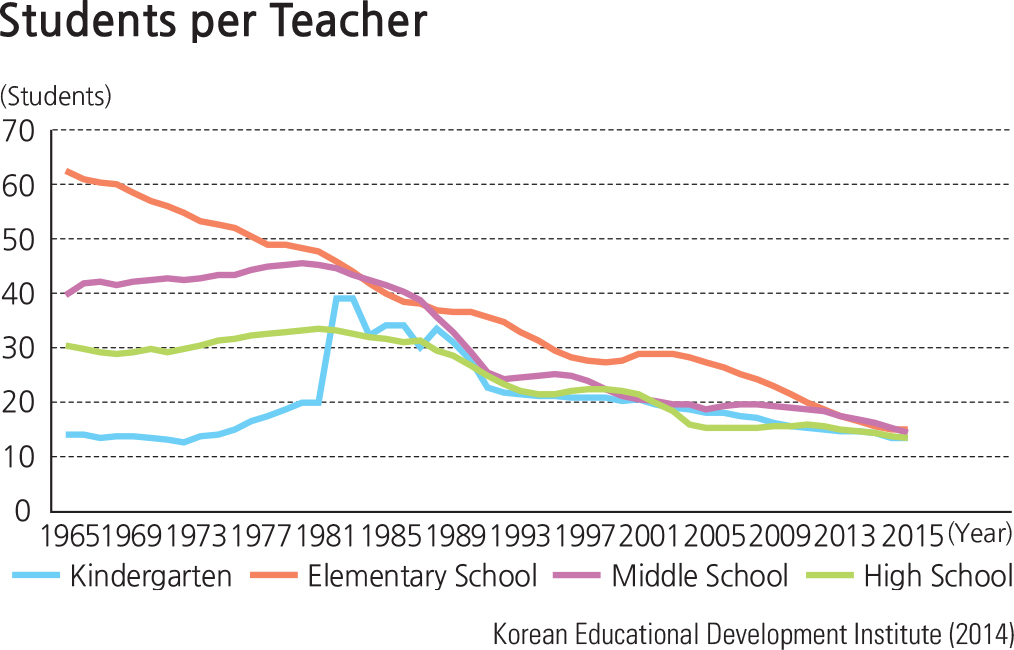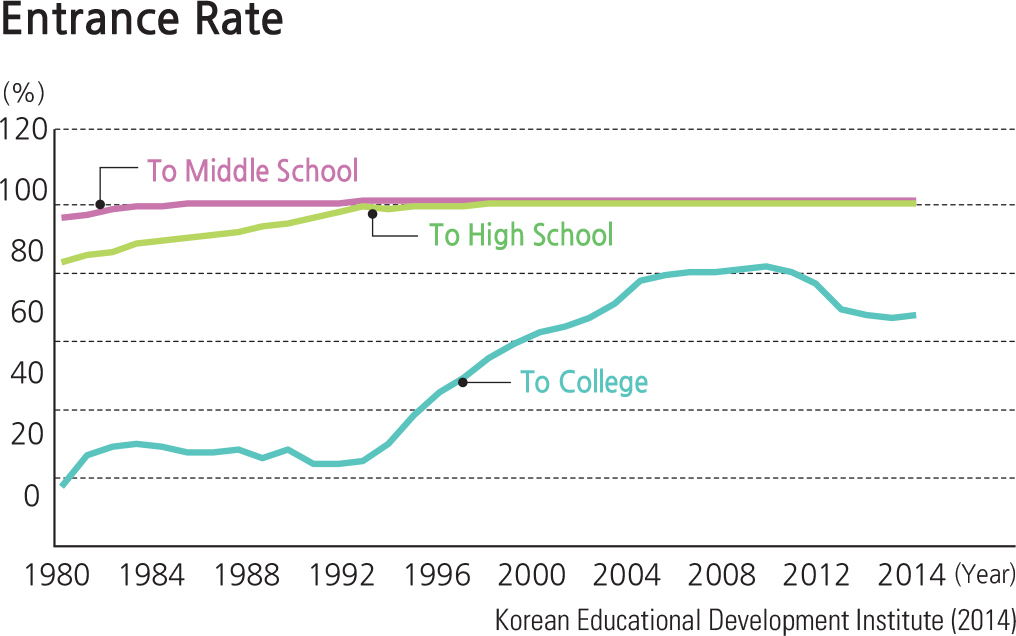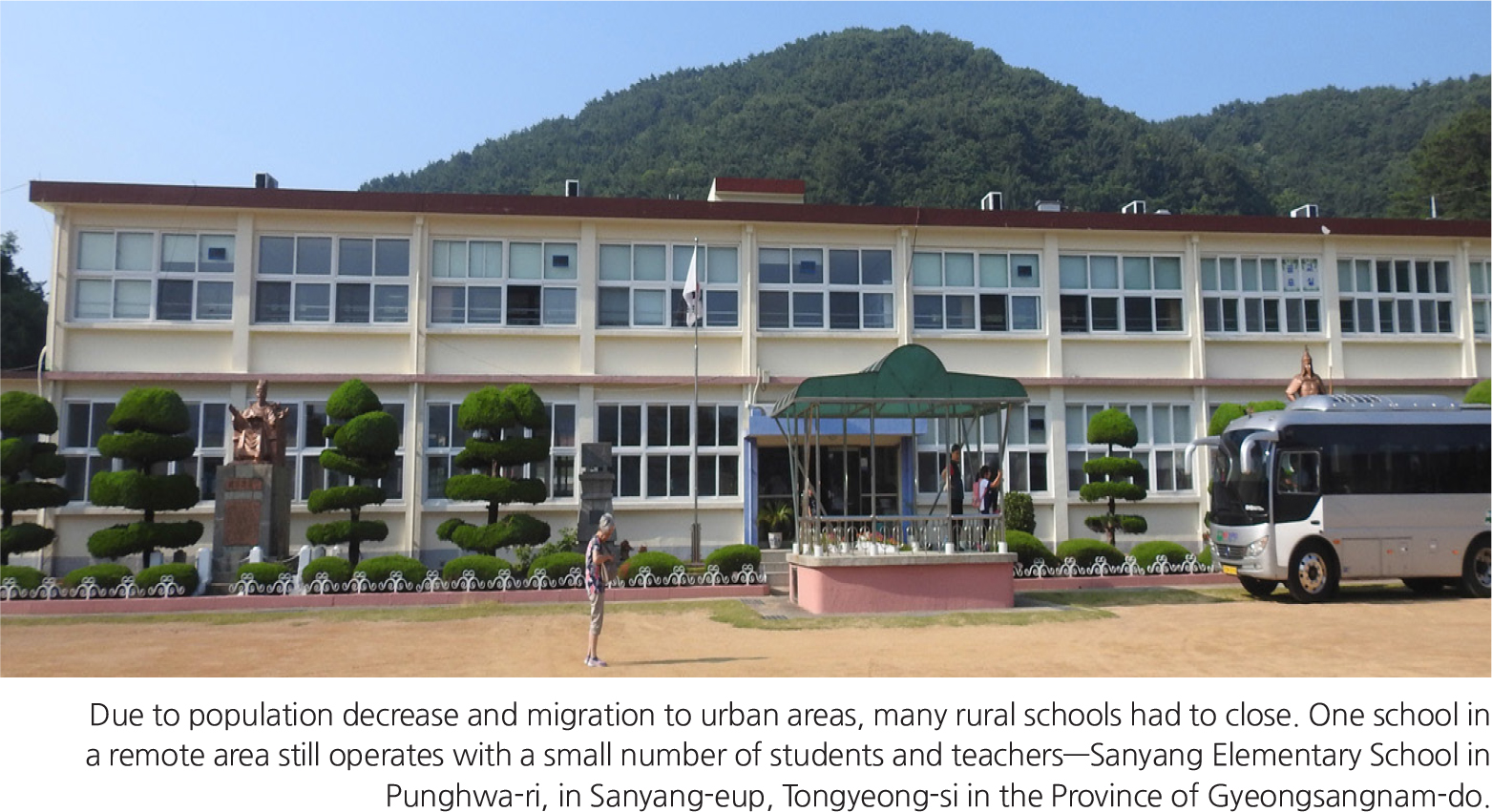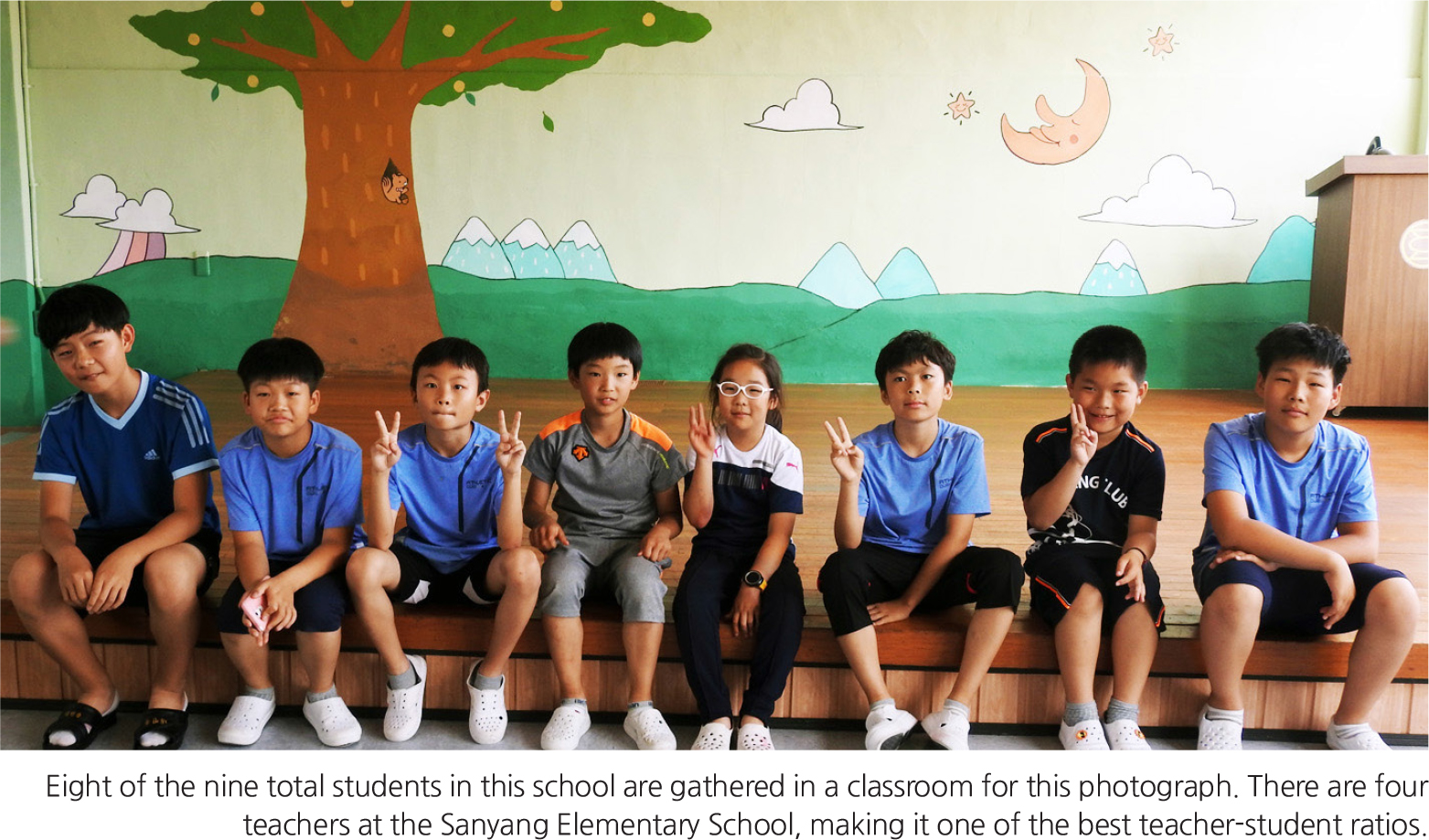Education has become the most important interest and concern for modern Koreans. Education is closely related to all aspects of society, such as family planning, population structure, household expenditure, residence selection, and city planning. In addition, a high level of enthusiasm for education and the high level of education spending, including private education expenditures, are conspicuous characteristics of Korean society.
As with many countries where modern education began at the birth of the republic, Korean education has undergone significant changes through the modernization process. The Korean school system is composed of elementary education for kindergarten and elementary school, secondary education for middle and high school, and higher education for college and related levels. Most Koreans acquire at least six years of elementary education and another six years of secondary education. The proportion entering higher education institutions is among the highest in the world.
Elementary and secondary education is provided by public educational institutions established by the state, along with a variety of private educational institutions. Various schools have been established for special purposes to cater to the characteristics of students. At the high school level, more choices such as college prep, vocational, and technical high schools are available. Higher education is based on four-year universities and two-year community colleges. There are also technical colleges covering various professions. Recently, online and extension colleges and degree programs have been developed. Master’ and doctoral degrees are offered by many graduate schools, and many students also pursue graduate study abroad.
The middle school entrance rate in Korea has reached a perfect 100 percent since the late 1980s, and the high school entrance rate has been close to 100 percent since the mid-1990s. Accordingly, the number of schools has been consistently increasing, though a large number of elementary schools were closed in areas of population decrease after the 1990s. Kindergarten enrollment has significantly increased since the 1980s as kindergarten education has become more widely available. On the other hand, the total number of students differs by age group, with the number of elementary students decreasing steadily due to decreasing fertility rates. A declining fertility rate has also resulted in a decrease in the middle and high school populations since the late 1980s. As a benefit, an increase in teacher hires has reduced the number of students per teacher. Changes in school age population vary greatly by region. Gyeonggi-do has experienced an increase in the school age population while other regions show large decreases from 2000 to 2014.
Brief Interpretation of the Maps
The 2014 Number of Students by School Levels by Administrative Units map was created with two sets of spatial data. The first set displays the proportion of students to the total population of each administrative unit at the -si/-gun/-gu level with the range of classes from less than 8% to more than 17% and a national average of 13.5%. The second set depicts the number of students in each of the 17 major administrative units (metropolitan areas and provinces) with a breakdown by school levels. This map shows a spatial pattern that reflects high concentrations of students in urban areas and surrounding suburbs. Rural areas, which generally have lower populations, simply do not have as many students. This creates a dilemma that the cost of operating a school in rural areas become proportionally higher based on per student expense. On the other hand, rural students may receive a better teacher-student ratio. From the graduated circles, one can clearly tell that the number of kindergarten students is the smallest group of students as affected by lower fertility rates and decreases in population in recent years.
Although, the 2000–014 Changes in School Age Population map uses data from both 2000 and 2014 years, the spatial pattern does not differ from the 2014 Number of Students map; the only difference is that it illustrates one province, Gyeonggi-do, had a 10.1% increase while all other administrative units experienced a decrease. This increase is primarily due to population migration into the suburbs of Seoul, in Gyeonggi-do Province.
In urban areas, students normally live within short distances to the school they attend. Is this the case for rural area students? Discuss the modes of transportation avail
